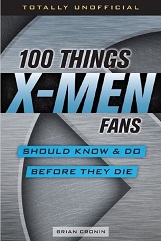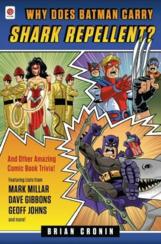Immaculate Re-play?
SPORTS LEGEND: The referees used video replay to check to make sure they had the right call on the “Immaculate Reception” before ruling it a touchdown.
The “Immaculate Reception” is the term people use to describe one of the most amazing plays in National Football League history, and certainly one of its most controversial, as well!
The Pittsburgh Steelers were playing host to the Oakland Raiders in a divisional playoff game in 1972. The Raiders had taken a 7-6 lead with a couple of minutes left in the game. Now, with only 20 seconds left to go, the Steelers were at their own 40 yard line and it was 4th down and 10 (in American football, you have four chances, or “downs” to move the ball forward at least 10 yards – if you don’t move it forward in 4 downs, the other team gets possession of the ball – so this was the Steelers’ last chance to move the ball at least 10 yards or else the Raiders would get the ball and the game would be over).
The Steelers called a pass play, and quarterback Terry Bradshaw was supposed to throw to receiver Barry Pearson. He was not open, so Bradshaw instead threw it down to the Raider 35 yard line to Tight End John “Frenchy” Fuqua. Fuqua was hit by Raider safety Jack Tatum and the ball flew up in the air.
Just before it hit the ground, it was snatched by Steeler running back Franco Harris, who then ran the ball all the way to the end zone for a game-winning touchdown.
The controversy over the play is what exactly happened when the ball hit where Fuqua and Tatum were.
If the ball hit off of Fuqua and the next person to touch it was Harris, the play would be ruled dead, due to a rule at the time that said that a forward pass could not hit off of two offensive players in a row.
If the ball hit off of Tatum and the next person to touch it was Harris, the play would be ruled good and the touchdown would stand.
If the ball hit off of Fuqua and THEN hit Tatum and THEN was caught by Harris, it would ALSO be good – the key is that two offensive players couldn’t touch a pass in a row.
Well, the back judge (the guy who sees Harris run into the end zone) ruled it a touchdown, but obviously he was just ruling that Harris did, in fact, cross the goal line with the ball. It would be up to the other referees to determine how the ball hit.
The head referee, and ultimately the man who would have to make the call, was Fred Swearington. His fellow referees gave him basically a pair of “I think it should stand”s and a pair of “I don’t know”s.
Swearington then called Art McNally, the NFL’s supervisor of officials, who was in the press box.
According to William N. Wallace in The New York Times at the time:
He was summoned to a field telephone by Art McNally, the National Football League’s supervisor of officials, who was in the press box. McNally had access to the instant replay on television. “How do you rule?” McNally asked. “Touchdown,” replied Swearingen. “That’s right,” said McNally. Score one for man’s technology, in this case camera and film.
The NFL did not have instant replay in 1972 (they did not have it until 1986).
But the story has always been that this was basically the first time video replay was used to confirm or debunk a call on the field, and that article is basically the “proof” given for it.
However, at the time, when asked about it, the NFL denied the story.
According to Swearington, the conversation he had with McNally went like this (as quoted in a Chuck Finder Sporting News piece on the game)…
Art McNally, then supervising, got the call. “Two of my men say that opposing players touched the ball,” Swearingen told him.
“Everything’s fine then, go ahead,” McNally responded. When Swearingen put the phone down, Boston asked, “What do we got?”
“We,” Swearingen said, “got a touchdown.”
Dan Rooney, son of the Steelers’ owner Art Rooney (who actually had missed the play as he had already headed down to the Steelers’ locker room to congratulate them on a fine season – it is worthwhile to note that this was the first playoff game for the Steelers in 25 years at the time! They would later go on to win FOUR Super Bowls during the 1970s, although they did get eliminated in the 1972 playoffs as 1972 was the season that the Miami Dolphins became the first, and as of 2009, the only, team to go undefeated in the regular season and playoffs) said in his auto-biography that he was in the press box when McNally took the call, and he attests to Swearington’s version.
Rooney makes a good point, in that in 1972, video replay was not the way it is now, so McNally likely hadn’t seen anything notable, if he saw a reply at all by the time Swearington called him.
I think, all said, the most likely scenario is the one that Swearington said happened, which is that he had an uneasy decision and wanted to clear it with his boss before calling a major touchdown.
So I’m going with…
STATUS: False
By the way, here’s the play in the superior NBC film angle, where it seems pretty darn conclusive that if was the correct call.
Thanks to bret3d for the clip!
Feel free (heck, I implore you!) to write in with your suggestions for future installments! My e-mail address is bcronin@legendsrevealed.com






[…] « Immaculate Re-play? […]
[…] any event, as I’ve been telling you (both here and here), the “Immaculate Reception” is one of the most dramatic, unlikely and […]